
The engraving "Rhinoceros" by Albrecht Dürer - Europe's acquaintance with a curious beast
"The Rhinoceros" is a famous engraving created by Albrecht Dürer in 1515. The large exotic animal is depicted encased in armor. Its sturdy short legs, resembling scales, firmly stand on the ground. Folds of thick hairless skin rise around its massive neck, forming a peculiar collar and resembling the crest of a wave, lifting the metal plates of armor on its back. The powerful nasal horn creates a formidable impression. Slightly curved, it is directed towards the signature with the artist's monogram in the upper right corner. Another smaller twisted horn on its back further enhances the impression. Spiraled, it points directly at the letter "R" in the title. The modern viewer easily finds inconsistencies with the real representation of an eastern fauna rhinoceros, but delves into the study of numerous small details and admires the skill of the author, who had never seen a rhinoceros in person and recreated its image solely based on written descriptions.
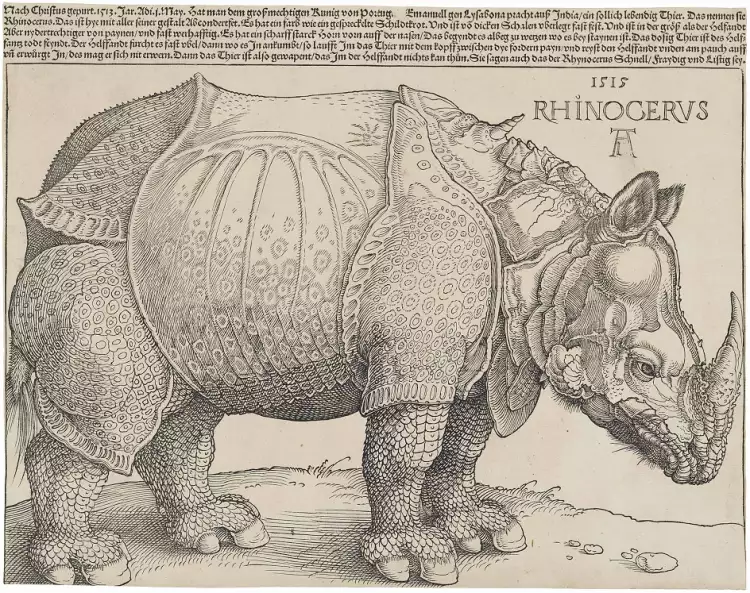 Albrecht Dürer. Engraving Rhinoceros, 1515
Albrecht Dürer. Engraving Rhinoceros, 1515
- Engraving title: "The Rhinoceros".
- Artist: Albrecht Dürer (1471-1528).
- Creation year: 1515.
- Size: 21.4 x 29.8 cm.
- Style: Renaissance.
- Genre: Animalism.
- Technique: Engraving. Woodcut.
- Material: Wood. Paper.
- Location: British Museum, London.
Albrecht Dürer is the greatest master of German art in the Renaissance era, an outstanding painter and engraver of the late 15th and early 16th centuries. Utilizing various artistic mediums, from pencils, pens, and watercolors to charcoal and chalk, he created expressive works filled with meaning. With his virtuoso mastery of engraving, he enriched printmaking techniques with impressive diversity and complexity. His engravings, elevated to the level of high art, are no less beautiful and precise in their lines than his paintings.
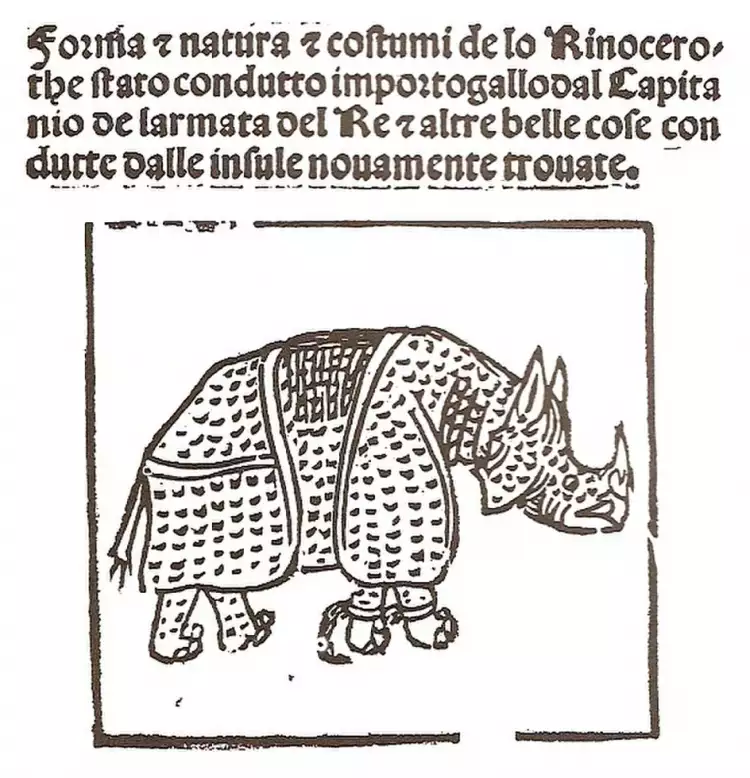 Albrecht Dürer. Unknown artist. Illustration Rhinoceros, 1515
Albrecht Dürer. Unknown artist. Illustration Rhinoceros, 1515
The reason behind the creation of Albrecht Dürer's engraving "The Rhinoceros" was an extraordinary event that stirred European society during that time. A previously unseen exotic creature arrived in the port of Lisbon as a gift to King Manuel I of Portugal from India. However, the display was short-lived. After amusing the capital's public with its exotic impressions, the king decided to surprise the Pope in Rome. The representative of Asian fauna was once again placed in the hold to be transported to the menagerie near the Vatican. But during a storm, the ship, along with the rhinoceros, sank, depriving Europeans of the opportunity to behold this wondrous creature of the animal world.
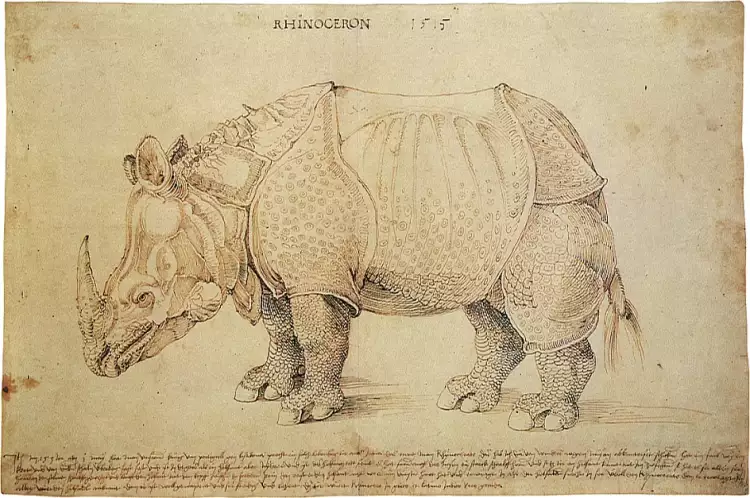 Albrecht Dürer. Drawing Rhinoceros, 1515
Albrecht Dürer. Drawing Rhinoceros, 1515
Not having been present at the rhinoceros exhibition in Lisbon, Dürer decided to create an engraving based on eyewitness accounts and a sketch made by an unknown author. He first drew the image with pen and ink, meticulously depicting the elements of this combatant beast capable of rivaling an elephant. Then, using woodcutting, he mirrored the image onto a piece of wood. In the upper part of the artwork, the master included a text that came into his possession, containing a written description and an affirmation of the representation's authenticity.
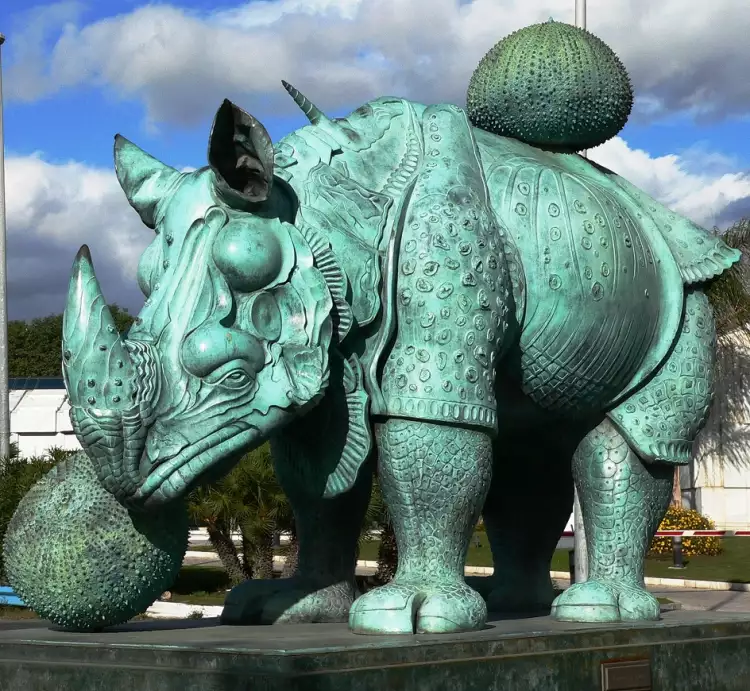 Albrecht Dürer. Salvador Dalí. Sculpture Rhinoceros, 1956
Albrecht Dürer. Salvador Dalí. Sculpture Rhinoceros, 1956
Thanks to multiple reproductions, Albrecht Dürer's engraving "The Rhinoceros" gained widespread recognition in European countries. For almost three centuries until the late 18th century, the image of this previously unseen exotic animal was considered authentic. It was published in textbooks, atlases, and journals. Later, attention shifted to more realistic depictions. However, the German artist's work became a vivid example of art surpassing reality and inspired subsequent masters to create masterpieces, including Salvador Dalí's bronze sculptural composition in Marbella, Spain.
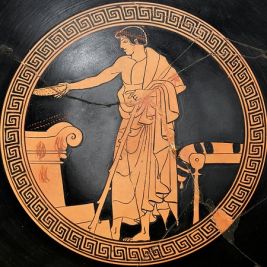 The art of Ancient Greece is an endless source of aesthetic pleasure for descendants
The art of Ancient Greece is an endless source of aesthetic pleasure for descendants 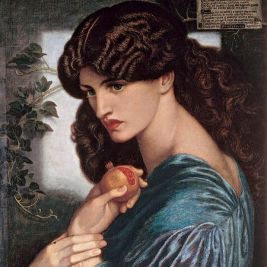 Pre-Raphaelites - the romantics of Victorian England
Pre-Raphaelites - the romantics of Victorian England 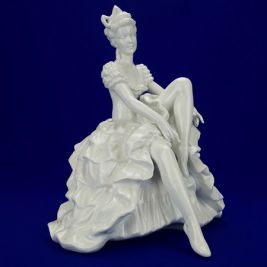 Wallendorfer Porcelain Manufactory - a manufacturer with a 250-year history
Wallendorfer Porcelain Manufactory - a manufacturer with a 250-year history 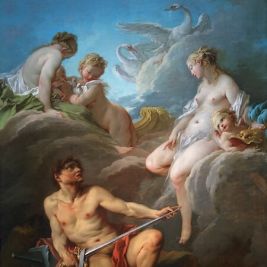 Mythological genre is the captivating world of ancient myths and legends
Mythological genre is the captivating world of ancient myths and legends 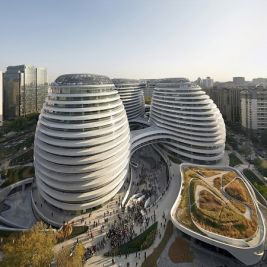 Top 10 Most Famous Architects - The Greatest Master Builders in Human History
Top 10 Most Famous Architects - The Greatest Master Builders in Human History 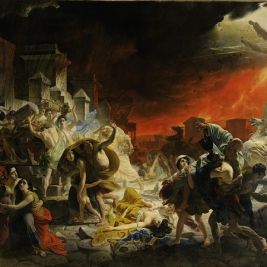 Historical Genre in Artists' Paintings
Historical Genre in Artists' Paintings 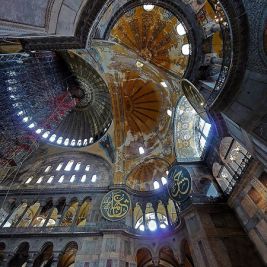 Byzantine art is a vast realm of unique artistic heritage of humanity
Byzantine art is a vast realm of unique artistic heritage of humanity 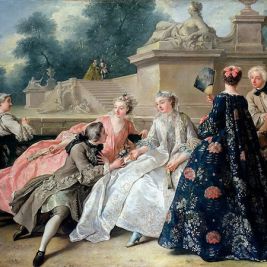 French Artists of the 18th Century
French Artists of the 18th Century  The painting "In the Orchard" by Laura Knight is a joyful hymn to the sun and summer
The painting "In the Orchard" by Laura Knight is a joyful hymn to the sun and summer 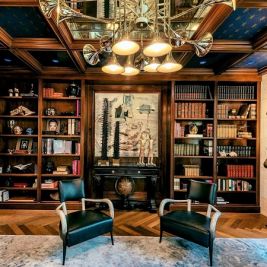 Jazz Style in Interior Design - Creative Legacy of the "Roaring Twenties"
Jazz Style in Interior Design - Creative Legacy of the "Roaring Twenties"